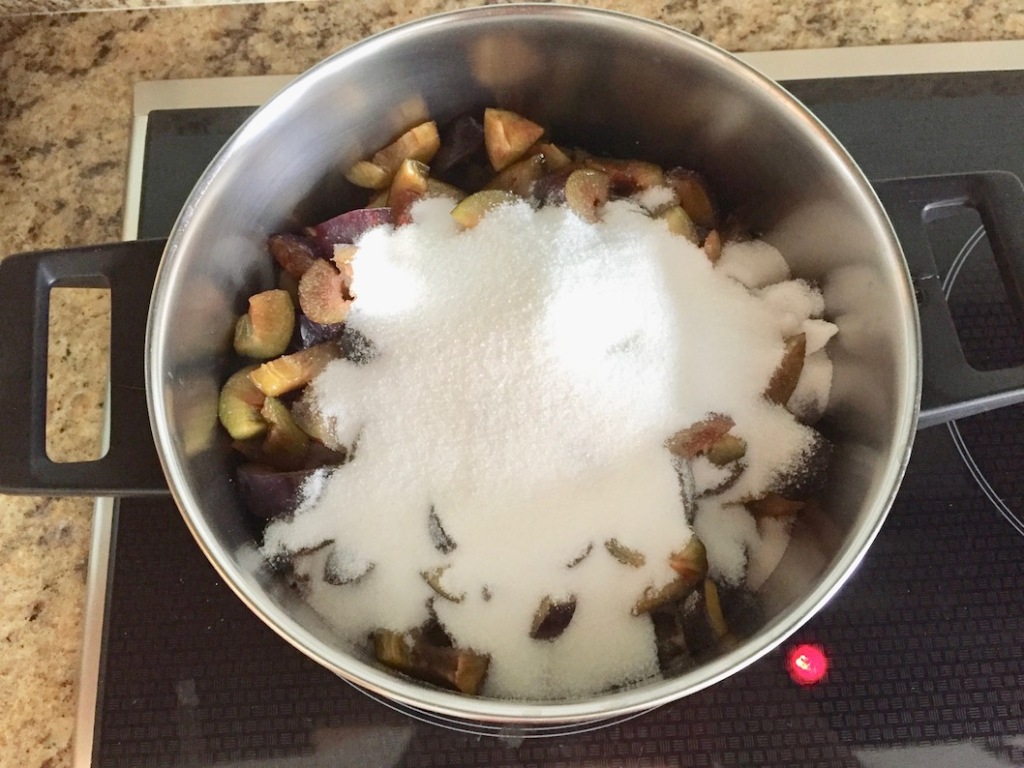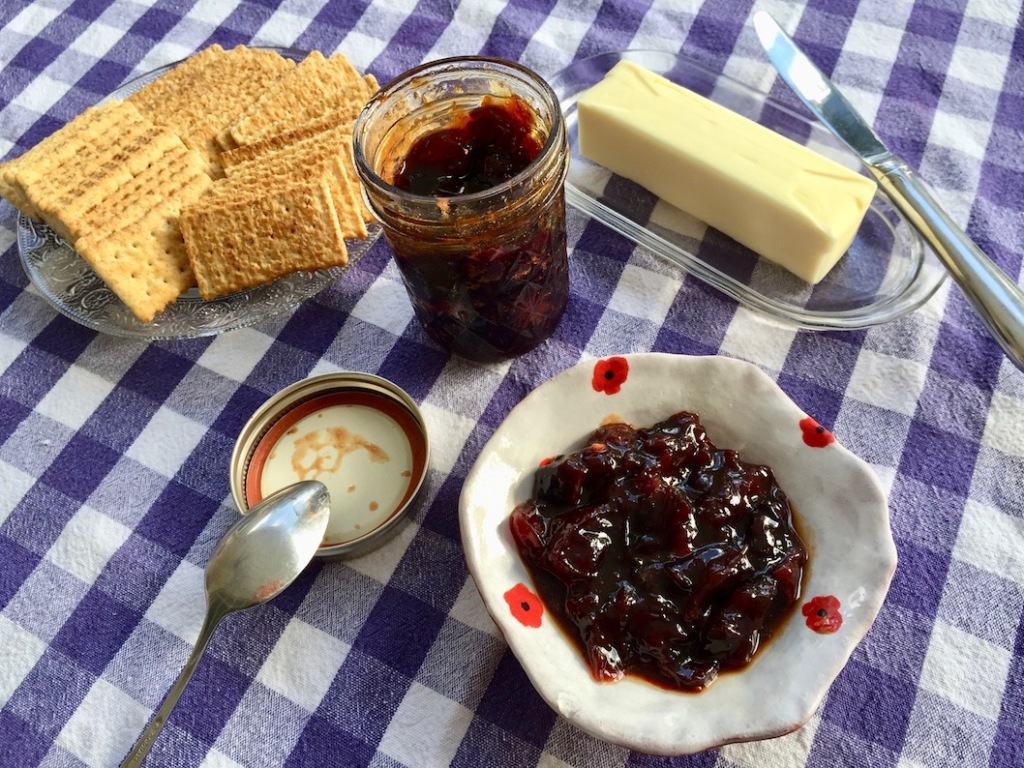My way of making jelly, or more accurately, preserves, does not entirely follow conventional jelly making, as you may find online or in books. I follow my grandmother and my mother’s methods. So far, it worked out for me. So what do I do?
Ingredients: with most fruit I only use two ingredients: fruit and sugar. No pectin, no citric acid and no other flavorings. Sometimes I add 2-3 tablespoons of lemon juice if the fruit in question lacks tartness.
There are some preserves though, such as quince, rose petals, eggplant and other out of the ordinary jellies and chutneys, that require additional ingredients like water or spices. But for most fruits, adding only sugar does the work.
Quantities: I do not use exact measurements. I cook by eye. Generally, my fruit to sugar ratio is about 3:1, sometimes 4:1, depends on the sweetness of the fruit. I love my preserves not too sweet and with a hint of tartness.
Cooking: I cut the fruit into 1 inch pieces, place in the pot, and cook on medium-low heat. I pour the sugar on top of the fruit without mixing it in. The fruit needs to cook slightly and start extracting some juice before sugar gets to the bottom of the pot. If you have sugar on the bottom while the bottom is still dry, you risk burning the sugar. Once there is enough liquid in the pot (about 1 inch), I stir in the sugar, cook uncovered and stir occasionally. To check for doneness, I spoon out a little bit of jelly, let it cool for one minute and see if it holds its shape. I actually don’t like my jelly on the thick side, but rather only mildly thick. This way, I can also use it to accompany desserts such as cake or ice cream.

Canning: another significant rule I do not follow is the sterilization of the jars before filling them with the preserves. I just never found it necessary. I pour the preserves into clean jars as soon as I turn off the heat, while the preserves are still very hot, and I close the jars with the lid immediately. The heat creates pressure in the jar and seals it. I’ve had sealed jars of preserves in my pantry for months, and they turned out perfectly fine when they were eventually opened. This method is not scientifically proven, but it works for me. You are welcome to try it and let me know how it turned out.
Here are pics of my Italian plum preserves. This is probably one of my all time favorite preserves, and since the season for these plums is so short, I buy a large amount as soon as I spot them, and use them to make these amazing preserves which I store in the pantry, as well as a plum crostata that never lasts more than two days in my house.


